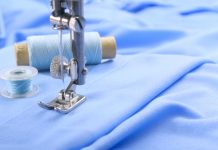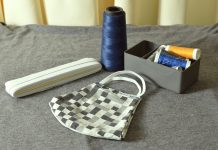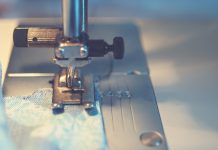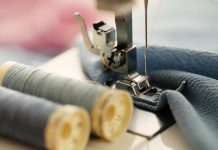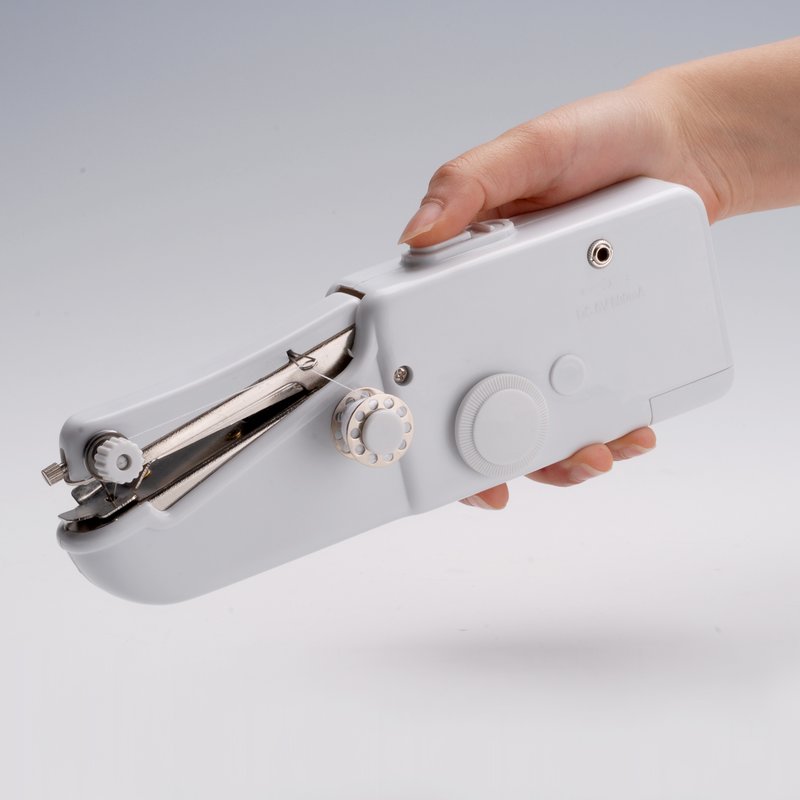Singer sewing and embroidery machines have a well-deserved reputation for quality and reliability. Singer’s embroidery machines give everyone the ability to add flair to their work by adding beautiful embroidered designs.
Singer embroidery machines allow you to give your sewing projects a handcrafted and personalized look that is almost impossible to replicate by hand. While Singer embroidery machines are intuitive and user-friendly, there are still some useful tips and tricks that will help ensure you get the most out of your machine.
Using the tips and tricks below, you will be able to add stunning embroidery work to your sewing projects and get the most out of your Singer embroidery machine.
 1. Slow Your Embroidery Down to Half Speed for Better Results
1. Slow Your Embroidery Down to Half Speed for Better Results
Slowing your embroidery down to a slower speed will allow you to keep an eye on it and ensure fewer mistakes. It is also important to check your needle for residue. We recommend cleaning it regularly with rubbing alcohol.
2. Do Not Leave Your Singer Embroidery Machine Running Unattended
Leaving your embroidery machines running by themselves might seem like a good idea, but in doing so, you are waiting for a problem to happen. While these machines are somewhat hands-off, you should watch them at all times.
Even if you are using Singer’s embroidery software to pre-program an embroidery design, you should not allow the machine to operate alone. A small accident, which could be easily corrected if caught, can lead to a catastrophe and ruin an entire sewing project if nobody there to catch it.
3. Avoid Misthreading in Your Embroidery Work
Misthreading can make an entire piece of embroidery work look sloppy and unprofessional. To avoid this issue, make sure you thread the bobbin to turn counter-clockwise when you pull on the bobbin thread.
You should also make sure you pull the thread through the tension spring. The instruction manual included with your Singer embroidery machine should provide a detailed tutorial that breaks down proper bobbin placement.
4. Make Sure Your Singer Embroidery Machine is Operating in a Clear Space
Make sure that your Singer embroidery machine is operating in a space that is clear from clutter. Given the delicate nature of embroidery work, you can throw the machine out of position and ruin the entire project with as little as an elbow bump or slight knock.
A clear and organized space will reduce the chances that you will accidentally knock an object into your embroidery machine while it is operating. A clean space will also make sure no loose threads or other debris interfere with your embroidery work.
Maintaining a clean workspace is a good habit to get into for any sewing and embroidery work. A clear space will help you stay focused and relaxed, which will help you make fewer mistakes.
5. Be Careful About Your Body Position as You Operate Your Embroidery Machine
In addition to running your Singer embroidery machine in a clear space, you must also be careful not to lean onto it accidentally. It does not matter if it is your chest, elbow, arm, or shoulder making contact with your Singer embroidery machine – any contact while it is operating can be enough to ruin the entire embroidery work.
6. Keep Thread Ends and Spools Away From the Machine
Loose threads can easily be picked up by your embroidery machine and become wound inside the wheel. Not only can this interfere with and ruin your embroidery work, but it can also freeze up the machine.
Once again, this comes back to maintaining a clean and organized workspace. While a few unused spools on the table might not seem like a big deal, it could result in ruined projects, as well as unpleasant and time-consuming repairs needing to be made to your embroidery machine.
7. Make Sure You are Using Your Singer Embroidery Machine for the Right Type of Work
Singer designs most of its embroidery machines for domestic use, rather than industrial work. If you are planning to purchase a Singer embroidery machine to perform embroidery work on an industrial scale, there is a good chance the machine will break.
Singer embroidery machines can create a few designs in a session, but running it for hours on end with no time to cool off can burn out the motor and ruin the machine. If you want to produce embroidered designs for commercial sale, do yourself a favor and choose an embroidery machine designed for industrial use. While it will cost more upfront, you will save yourself time, money, and effort in the long run.
8. Make Sure Your Designs are Optimized for Your Embroidery Machine
There is a tendency to blame embroidery machines for poorly executed embroidery work, but in many cases, the problem is a design issue, rather than a mechanical one.
Long jumps in the design will often result in broken threads that are not the embroidery machine’s fault. Ensure the embroidery designs you come up with are properly digitized to give your Singer embroidery machine the best chance of making them a reality.
It is also important to remember that an embroidery design that works well on thin cotton fabric, such as a T-shirt, will not necessarily translate well to a thicker fabric, such as denim. Just make sure your designs are realistic for your machine and will work with your chosen material.
9. Always Read Through the Instruction Manual
Even if you have experience working with an embroidery machine, it is still important to thoroughly read through the instruction manual that Singer provides with their machines.
Nobody knows an embroidery machine quite like the manufacturer, so do yourself a favor and read how Singer recommends you should operate your new machine. Singer also provides helpful online tutorials, which will help you get the most from your machine.

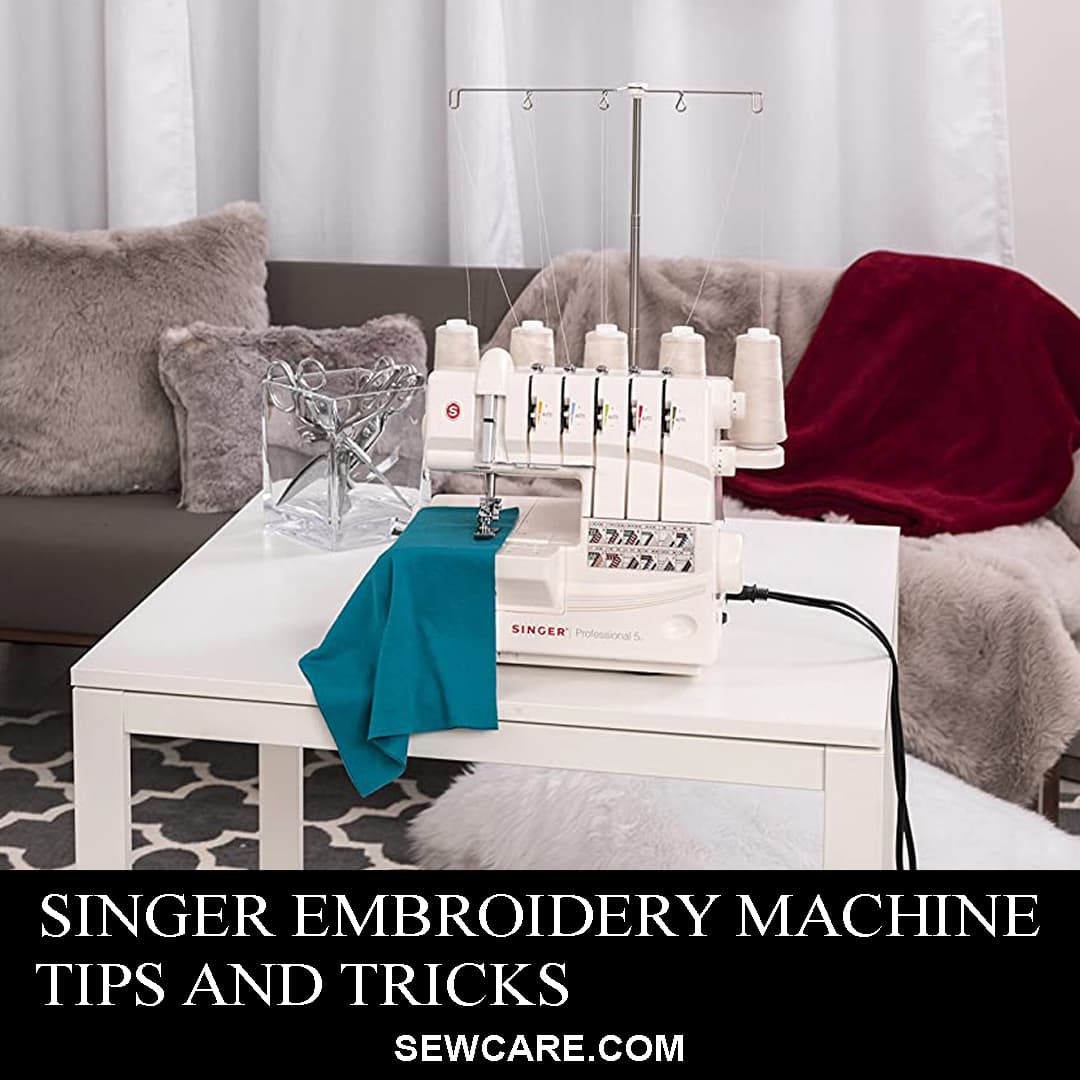 1. Slow Your Embroidery Down to Half Speed for Better Results
1. Slow Your Embroidery Down to Half Speed for Better Results